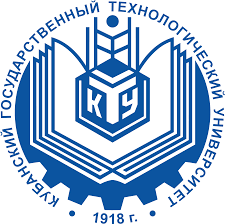
VII Съезд биофизиков России
Краснодар, Россия
17-23 апреля 2023 г.
17-23 апреля 2023 г.


|
VII Съезд биофизиков России
Краснодар, Россия
17-23 апреля 2023 г. |
 |
Программа СъездаСекции и тезисы:
Молекулярная биофизика. Структура и динамика биополимеров и биомакромолекулярных системАбсорбционные свойства и фотосенсибилизирующее действие молекулярного кислородаА.А. Красновский1*, А.С. Бендиткис1, А.С. Козлов1 1.ФИЦ Биотехнологии РАН; * phoal(at)mail.ru В виду исключительной важности кислорода в биосфере, любые свойства его молекул представляют большой интерес для изучения. В ходе многолетних исследований нашей группы методом лазерной активации кислорода нам впервые удалось измерить спектр поглощения кислорода в аэрированных органических растворителях и воде в естественных условиях. Примерно такими же абсорбционными свойствами, по-видимому, обладает кислород в клетках живых организмов. Успеха удалось добиться путем измерения скоростей химического захвата синглетного кислорода и интенсивности его собственной фосфоресценции при 1270 нм под действием лазерного облучения в интервале длин волн 500-1300 нм. Обнаружены два главных максимума спектра действия активации кислорода при 765 и 1273 нм. Относительная интенсивность этих максимумов зависела от природы растворителей. В неполярных гидрофобных средах полоса 765 нм в 6 раз меньше длинноволновой полосы. В воде и спиртах полоса 765 нм – в 1,5-2 раза меньше ИК полосы. Кроме этих главных полос обнаружены существенно более слабые полосы при 690 и 1070 нм. Первая – примерно в 15 раз слабее по максимальной амплитуде, чем полоса 765 нм, вторая во всех средах – примерно в 100 раз слабее, чем полоса 1273 нм. При действии красного света 630 нм, соответствующего максимуму поглощения димерного кислорода, генерацию синглетного кислорода обнаружить не удалось. Таким образом установлено, что спектр поглощения растворенного кислорода содержит те же четыре основных максимума, что и спектр поглощения газообразного кислорода в атмосфере Земли. Однако, основной максимум поглощения атмосферного кислорода соответствует Фраунгоферовой линии 762 нм, а ее интегральный абсорбционный коэффициент 300 раз больше, чем у полосы в области 1270 нм. У растворенного кислорода самой сильной является полоса в области 1270 нм, которая 6 раз больше по амплитуде, чем полоса 762 нм. Полосы димерного кислорода в видимой области спектра нам наблюдать не удавалось. Обсуждается значение этих фактов для понимания фотодинамической активности (светокислородный эффект) и функции кислорода в клетках. Подробная информация приводится в цитированных ниже публикациях и указанных в них ссылках. Работа частично поддержана грантом РФФИ № 19-04-00331 А и госзаданием ФИЦ Биотехнологии РАН.
Литература 1. Krasnovsky А.А., Kozlov A.S., Benditkis A.S. Comparison of Photodynamic Activities of Molecular Oxygen and Porphyrins. // Macroheterocycles. 2019. Vol. 12. P. 171-180. 2. Kozlov A.S., Egorova O.N., Medvedkov O.I., Krasnovsky A.A. Activation of oxygen molecules by 1070 nm laser radiation in aerated solvents. // Optics Lett. 2021. Vol. 46. No. 3. P. 556-559. 3. Benditkis A.S., Kozlov A.S., Goncharov S.E., Krasnovsky A. A. Detection of the Fraunhofer band B (690 nm) in the absorption spectra of oxygen in aerated solvents. // J. Opt. Soc. of America, series B. 2021. Vol. 38, No 11. P. 3410-3416. 4. Красновский А.А., Козлов А.С., Бендиткис А.С. Лазерная активация кислорода в аэрированных растворах. Измерение спектров поглощения растворенного кислорода в естественных условиях. // Известия высших учебных заведений. Физика. 2021. Т. 64. № 11. С. 45-54. 5. Krasnovsky A.A., Kozlov A.S., Benditkis A.S. Laser activation of oxygen in aerated solvents. Measurement of the absorption spectra of oxygen dissolved in aerated solvents under natural conditions. // Russ. Phys. J. 2022. Vol. 64, No. 11, P. 2035-2045. Absorption properties and photosensitizing effect of molecular oxygenA.A. Krasnovsky1*, A.S. Benditkis1, A.S. Kozlov1 1.FRC of Biotechnology RAS; * phoal(at)mail.ru In view of the exceptional importance of oxygen in the biosphere, any properties of its molecules are of great interest for study. As a result of many-year research of our group, using activation of oxygen by laser radiation we for the first time, succeeded in measurement of the oxygen absorption spectra in aerated organic solvents and water under natural conditions. Approximately the same absorption properties of oxygen one can expect in the cells of living organisms. Success was achieved due to measuring the rates of chemical trapping of singlet oxygen and detection of the intensity of its own phosphorescence at 1270 nm under laser irradiation in the wavelength range of 500-1300 nm. Two main maxima of the oxygen activation action spectrum were found at 765 and 1273 nm. The relative intensity of these maxima depended on the nature of the solvents. In non-polar hydrophobic media, the 765 nm band is 6 times smaller than the long wavelength band. In water and alcohols, the 765 nm band is 1.5-2 times smaller than the IR band. In addition to these main bands, much weaker maxima were found at 690 and 1070 nm. The amplitude of the first maximum is about 15 times weaker than that at 765 nm, the amplitude of the second maximum in all media is about 100 times weaker than that at 1273 nm. Under the action of red light at 630 nm, which corresponds to the absorption maximum of dimeric oxygen, the generation of singlet oxygen could not be detected. Thus, it has been established that the absorption spectrum of dissolved oxygen contains the same four main maxima as the absorption spectrum of gaseous oxygen in the Earth's atmosphere. However, the main absorption maximum of atmospheric oxygen corresponds to the Fraunhofer line at 762 nm, and its integral absorption coefficient is 300 times greater than that of the band in the 1270 nm region. For dissolved oxygen, the strongest band is in the region of 1270 nm, which is 6 times larger in amplitude than the band at 762 nm. Bands of dimeric oxygen in visible region were not revealed in our experiments. The significance of these facts for understanding photodynamic activity (light-oxygen effect) and the function of oxygen in cells is discussed. Detailed information is provided in the publications cited below and references therein. This work was supported in part by RFBR grant No. 19-04-00331 А and the state assignment of the FRC Biotechnology RAS.
Literature 1. Krasnovsky A.A., Kozlov A.S., Benditkis A.S. Comparison of Photodynamic Activities of Molecular Oxygen and Porphyrins. // Macroheterocycles. 2019. Vol. 12. P. 171-180. 2. Kozlov A.S., Egorova O.N., Medvedkov O.I., Krasnovsky A.A. Activation of oxygen molecules by 1070 nm laser radiation in aerated solvents. // Optics Lett. 2021. Vol. 46. No. 3. P. 556-559. 3. Benditkis A.S., Kozlov A.S., Goncharov S.E., Krasnovsky A.A. Detection of the Fraunhofer band B (690 nm) in the absorption spectra of oxygen in aerated solvents. // J. Opt. soc. of America, series B. 2021. Vol. 38. No. 11. P. 3410-3416. 4. Krasnovsky A.A., Kozlov A.S., Benditkis A.S. Laser activation of oxygen in aerated solutions. Measurement of the absorption spectra of dissolved oxygen in natural conditions. // Izvestiya Vysshikh Uchebnykh Zavedenii. Physics. 2021. Vol. 64. No. 11. P. 45-54. 5. Krasnovsky A.A., Kozlov A.S., Benditkis A.S. Laser activation of oxygen in aerated solvents. Measurement of the absorption spectra of dissolved oxygen in aerated solvents under natural conditions. // Russ. Phys. J. 2022. Vol. 64. No. 11. P. 2035-2045. Докладчик: Красновский А.А. 421 2023-01-26
|